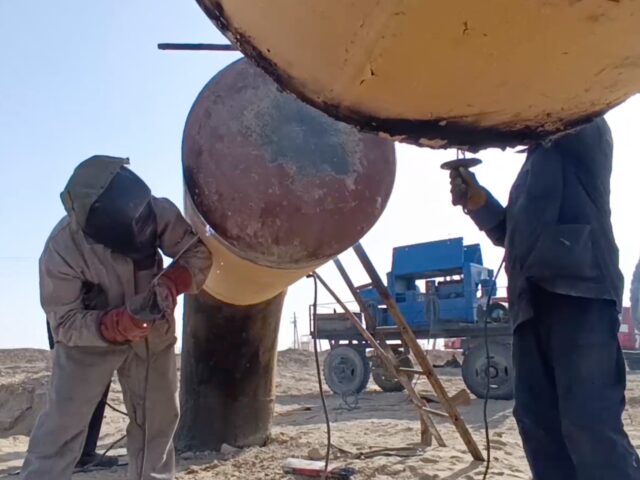
Uzbekistan to Receive Russian Gas via Renovated Soviet-Era Pipeline
Publication: Eurasia Daily Monitor Volume: 20 Issue: 84
By:

On April 27, at the Tashkent Investment Forum, Uzbekistani Energy Minister Jurabek Mirzamakhmudov announced that Russia would begin supplying his country with natural gas via its Soviet-era pipelines (TASS, April 28; The Diplomat, May 9). In truth, Moscow is on the hunt for new customers after its gas deliveries to Europe have been slashed by Western sanctions coming as a result of the Kremlin’s war against Ukraine. Russia used to deliver roughly 140 billion cubic meters (bcm) to Europe annually, its most lucrative export market; however, due to the extensive sanctions region and European countries turning away from Russian energy, current deliveries are only a fraction of this (Iea.org, March 2022).
As a result, Central Asia has become a crucial area for Russia’s energy export needs, with Uzbekistan playing a key role. In January 2023, for the first time, Uzbekistan began importing Russian gas due to a severe energy crisis at home (The Moscow Times, January 26). The Kremlin has sought to build on this relationship, not only through the use of its Soviet pipelines but also in encouraging Uzbekistan and Kazakhstan to create a tripartite gas union with Russia (Carnegie Politika, March 13).
The Soviet Union began to exploit its Central Asian hydrocarbon deposits in the years following World War II, though the oil and natural gas resources were developed and subsequently utilized solely for internal Soviet needs. Three decades after the Soviet Union’s collapse, hydrocarbon exports have become an increasingly integral component for the economies of the post-Soviet states in the Caucasus and Central Asia, particularly those surrounding the hydrocarbon-rich Caspian Sea. Uzbekistan seems keen to buy Russian gas, as, unlike Kazakhstan and Turkmenistan, it only has modest gas deposits and now cannot even cover its domestic needs with its own resources.
Starting in the 1960s, the Soviets built a network of pipelines, the Truboprovodnaiia sistema Sredniaia Aziia-Tsentr network (Central Asia-Center pipeline system; SATS), which ran northward to bring Turkmenistani gas via Uzbekistan and Kazakhstan to the Russian Socialist Soviet Republic and which was capable of transmitting up to 50 bcm of gas annually. The SATS eastern branch consists of the SATS-1, -2, -4 and -5 pipelines, which were built between 1960 and 1988. Gazprom now controls the SATS network traversing post-Soviet Central Asia.
The Soviet-era gas pipelines are planned to be upgraded by building new compressor stations to reverse the previous flow pattern from Central Asia to Russia. Uzbekistan has suffered from debilitating gas shortages this past winter. In truth, with its economic growth in recent years, demand for gas has outstripped its supplies (The Diplomat, May 9).
According to the government, in March 2023 alone, Uzbekistan’s natural gas imports grew exponentially. Overall, these imports have surged due to the decline in gas production across the country. Besides surging natural gas imports, in the first fiscal quarter of 2023, Uzbekistan also sharply increased its energy imports of coal, oil and petroleum products (Stat.uz, April 28). Indicative of severe logistical problems in both cost and supply, out of Uzbekistan’s $152.9 million-worth of natural gas imports for the first quarter of this year, March alone accounted for $151.2 million of the cost, a 260-percent increase as compared to the same period in 2022. This amount also represents slightly more than half of the country’s imports of natural gas for the whole of last year ($281.9 million) (Gazeta.uz, April 22).
For Russia, after its gas deliveries to Europe were sharply curtailed following explosions on the Nord Stream One and Two subsea pipelines and additional Western sanctions, Uzbekistan represents a significant consolation prize as Gazprom seeks to reorientate its gas export business eastward.
However, preliminary work still needs to be done before Gazprom throughput from Russia can reach Uzbekistan through the repurposed SATS-4 pipeline. The entire 60-year-old pipeline must first undergo a full survey, particularly as it traverses extreme climatic conditions in the Kyzylkum and Karakum deserts. Following inspection, the compressor stations can then be re-equipped and upgraded to operate in reverse (Neftegaz.ru, January 26). Concerns about the operational security of the SATS pipeline network are well-founded, as, over the years, there have been a number of major accidents, fires and explosions, notably a 2009 accident on the SATS-4 line in Turkmenistan, which took nearly a year to repair and heavily damaged relations between Gazprom and Turkmengaz (Neftegaz.ru, April 30).
Furthermore, since the beginning of Russia’s re-invasion of Ukraine, competition has intensified between Russia, China and the United States for influence over Central Asia. For the landlocked post-Soviet Central Asian states, their governments’ most pressing question is how to improve their economies despite their geographic isolation. An integral component of their economic growth is access to affordable and reliable energy supplies, which Russia alone could supply via its unique, if somewhat dilapidated, Soviet-era pipeline network. For the region, these energy exports, beyond providing alternative revenue to a sanctioned pariah state, raise the intriguing question of what Russia will expect in return for its largesse.



